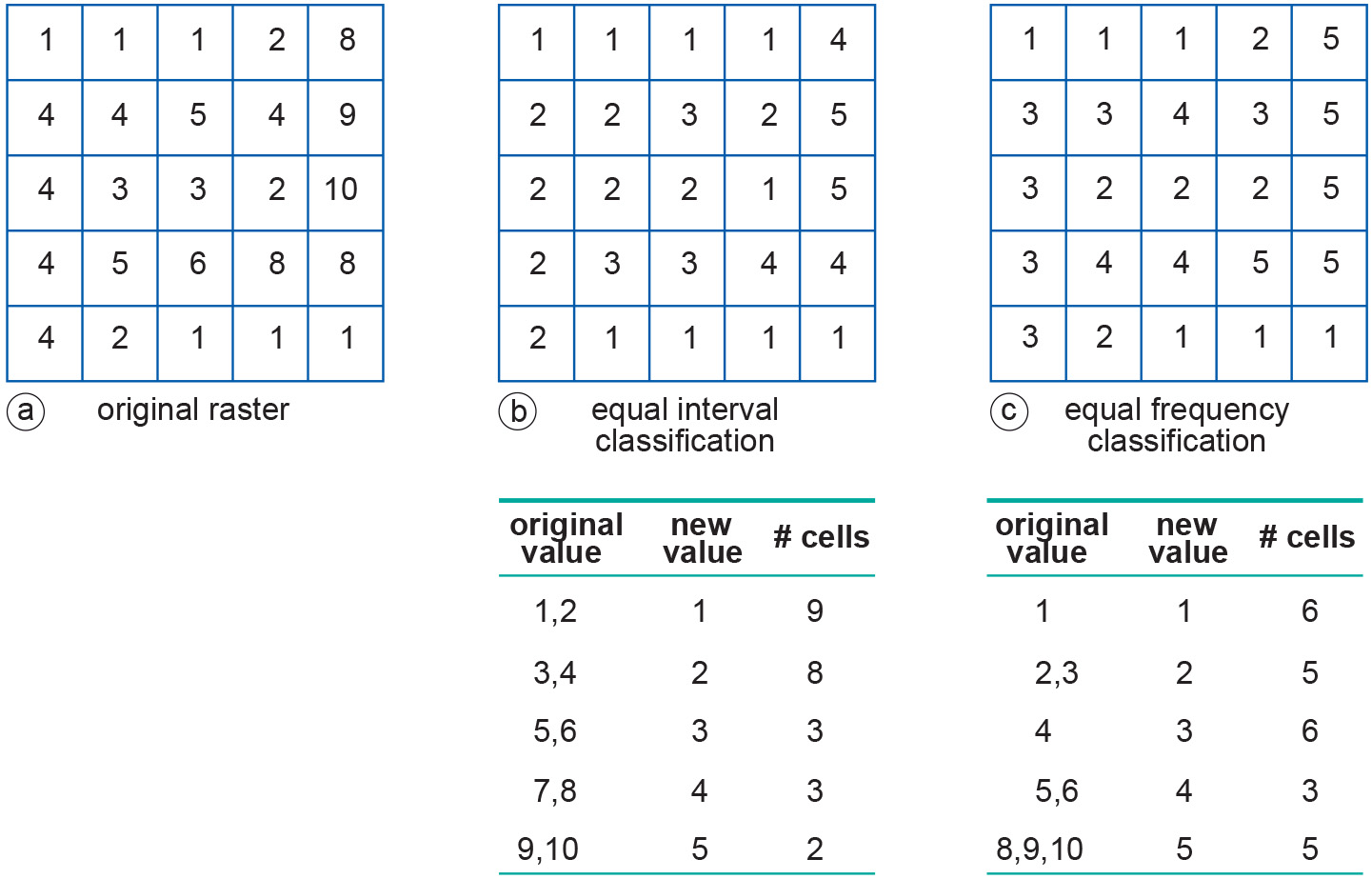Automatic reclassification
Introduction
User-controlled classifications require a classification table or user interaction.
Equal Interval Technique
The minimum and maximum values vmin and vmax of the classification parameter are determined and the (constant) interval size for each category is calculated as (vmax - vmin) ∕ n, where n is the number of classes chosen by the user. This classification is useful in that it reveals the distribution pattern, as it determines the number of features in each category.
Equal Frequency Technique
This technique is also known as quantile classification. The objective is to create categories with roughly equal numbers of features per category. The total number of features is determined first, then, based on the required number of categories, the number of features per category is calculated. The class break points are then determined by counting off the features in order of classification parameter value.
Examples

Learning outcomes
-
11 - Spatial analysis: classes of functions
Classify and explain spatial analysis functions (measurements, classification, overlay, neighbourhood and connectivity) in a raster and vector environment (level 1 and 2).
Prior knowledge
Outgoing relations
- Automatic reclassification is a kind of Reclassification